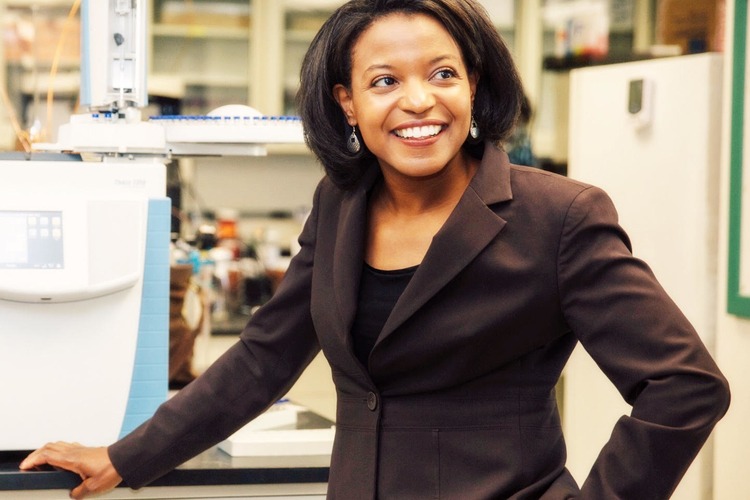Food from Thin Air? Alumni Startup Transforms Carbon into Protein
-
-
Slice of MIT
Filed Under
Recommended

The animal agriculture sector is responsible for approximately 18 percent of human-induced greenhouse gas emissions—more than all of transportation combined, according to the Food and Agriculture Organization of the United Nations. Many believe that a shift to alternate sources of protein is an important strategy to reduce those emissions, but while most efforts in this area are plant-based, Lisa Dyson PhD ’04 has turned to an untapped protein source: the air around us.
The inspiration for Air Protein came from space travel. “If you want to make things in a more resource-efficient way, look to NASA,” says Dyson. In this case, her jumping-off point was research that NASA did in the 1960s to develop a method for converting carbon dioxide into food for astronauts on long missions.
Elaborating on NASA’s research, Air Protein is produced by combining carbon dioxide with microbes called hydrogenotrophs. It might sound far-out, but as Dyson notes, we already commonly consume products of microbial reactions—think wine, beer, or cheese, which are all created through the similar process of fermentation.
She explains, “Making air-based meat is a little like making yogurt. First, we start with elements from the air we breathe—carbon dioxide, oxygen, and nitrogen—and combine them with water and mineral nutrients. Next, we use renewable energy and a probiotic production process where cultures convert the elements into nutrients. The output is a nutritious source of protein with the same amino acid profile as animal protein. Finally, to give the protein the texture and flavor of meat, we use a combination of pressure, temperature, and culinary techniques.”
We’re trying to reshape food for future generations. This is all about sustainability.
In November 2019, Air Protein, the company, announced the world’s first air-based meat with its “chicken” variety. Dyson, who serves as CEO, is now focused on fine-tuning the company’s beef, pork, and seafood options.
Air Protein is just one of several offshoots of Kiverdi, a startup Dyson cofounded with John Reed SM ’01, PhD ’03, who serves as the company’s chief scientist. (They hold MIT degrees in physics and in materials science and engineering, respectively.) Dyson and Reed created the company to develop carbon transformation technologies that can address climate change and its effects. They are also working on processes to convert carbon-based materials into biodegradable polymers and to convert carbon from the air into nutrients for depleted soil.

Air Protein CEO Lisa Dyson.
Cutting back on the emissions of our animal agriculture sector and recycling existing carbon are key benefits of Air Protein. But Dyson says the central issue her product addresses is providing nutrition for a growing planet. While it takes two years to yield a steak the conventional way—consuming plenty of water, land, and resources—creating a comparable portion of Air Protein takes only three days, says Dyson. “We’re trying to reshape food for future generations. This is all about sustainability. How do we feed 10 billion people by 2050? We can’t do it with our current methods.”







